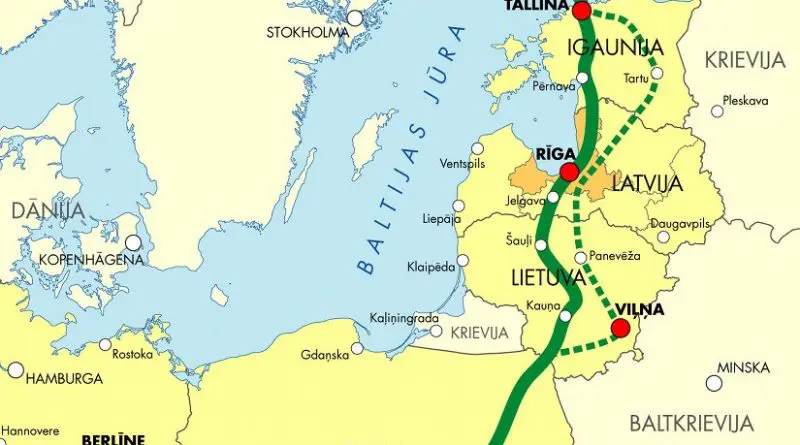The ‘Rail Baltica’ Project: True European Interconnectedness? – OpEd
By Published by the Foreign Policy Research Institute
By Tamari Ramishvili*
Russia possesses a tremendous amount of control over the Baltic states’ rail infrastructure—including the ability to cut off all international train service between them. There is no direct passenger train service connecting the Baltic states to one another or to the European Union. Today, all international rail lines run east, dating back to the Russian Empire, and later to the Soviet Union, when direct connections between Estonia, Latvia, and Lithuania were discouraged and everything had to go through Moscow.
Yet this threat to the region’s security will be eliminated with the completion of the Rail Baltica project. Rail Baltica will offer more security to the Baltic states by integrating them with the EU rail network apart from their existing integration with the Russian rail network.
Rail Baltica is a priority project of the “European Union Trans-European Transport Network,” aimed at connecting Finland, the Baltic states, and Poland to the rest of the EU countries. Former European Transport Commissioner, Siim Kallas, explained that “as members of the European Union, the Baltic States need to be connected to Europe, not just politically – but through their infrastructure.”
The project involves the construction and upgrade of a continuous railway line for both passenger and freight transport between Estonia and Poland, passing through Latvia and Lithuania. It will develop a north-south railway corridor and circumnavigate Russia’s Kaliningrad Oblast as well as the Hronda territory in Belarus. The railway will be built with the EU 1435 mm standard gauge, replacing the existing 1520 mm Russian gauge line that is primarily used in the former Soviet Union states. (Editor’s note: The Soviets used a broader gauge track so that invading states could not use their rail lines without switching the gauge of their trains.)
The Rail Baltica project took a major step forward in 2015, when the European Commission approved funding for its three main projects. The first project involves several studies and works on different sites in Estonia, Latvia, and Lithuania. The second project takes place in Lithuania, focusing on the development of the EU standard gauge railway line from the border with Poland to the city of Kaunas, and then on toward the Latvian border. The third project will upgrade the existing railway line in Poland, to the EU standard gauge line. The three projects together will form part of the Rail Baltica project and are estimated to cost €734 million, which will be funded by the EC’s Connecting Europe Facility (CEF) Program for Transport.
With the ability to transport at least 13 million tons of cargo and five million passengers a year, Rail Baltica will be the largest infrastructure project ever undertaken in the Baltic States. Lithuanian minister of transport and communications, Rimantas Sinkevičius, explained that the project will “create new possibilities for market integration, economic development and new mobility solutions for passenger and cargo transportation in the Baltic region.”
The construction of a new railway is set to begin in 2020, and the overall project is estimated to cost €3.68 billion. Over 80 percent of the project will be financed by member states and the EU TEN-T budget. The Tallinn-Riga-Kaunas route is scheduled to be completed in 2025, and the rail connection to Warsaw by 2030. When complete, the project will connect the Baltic states to the rest of the EU rail network.
About the author:
*Tamari Ramishvili is a Research Associate with the Project on Democratic Transitions. She is currently working towards her MA in Public Policy at American University, with a concentration in International Development. She holds a dual BA from Rutgers University in Philosophy and Political Science, with a minor in National Security, CIA, and Counterintelligence. Ms. Ramishvili is a regular contributor to FPRI’s Baltic Bulletin and her areas of research focus include Russia, Black Sea and the Baltic regions.
Source:
This article was published by FPRI.

